
Transforming your porch or patio into a garden oasis of flowering plants and bushes can elevate your outdoor space into a sanctuary of beauty and tranquility. Not only does this enhancement provide a visually stunning environment, but it also fills the air with delightful fragrances, creating an inviting atmosphere for relaxation and entertainment. Imagine sipping your morning coffee surrounded by the vibrant colors and sweet scents of blooming flowers, or hosting an evening gathering in a lush, aromatic setting.
The benefits of cultivating a porch or patio garden extend beyond aesthetics. Flowering plants and bushes can improve air quality by filtering pollutants and producing oxygen, contributing to a healthier living space. They also attract beneficial pollinators like bees and butterflies, supporting local ecosystems and promoting biodiversity. Additionally, spending time in nature has been shown to reduce stress, boost mood, and enhance overall well-being. By transforming your porch or patio into a floral paradise, you not only create a beautiful retreat but also enjoy the numerous physical and mental health benefits that come with being closer to nature. Dive into the world of gardening and discover how you can turn your outdoor space into a fragrant, colorful haven that delights the senses and nurtures the soul.
Here are some popular flowering plants that are perfect for patios and small gardens, available for purchase from PlantVine.com, along with tips on how to care for them.
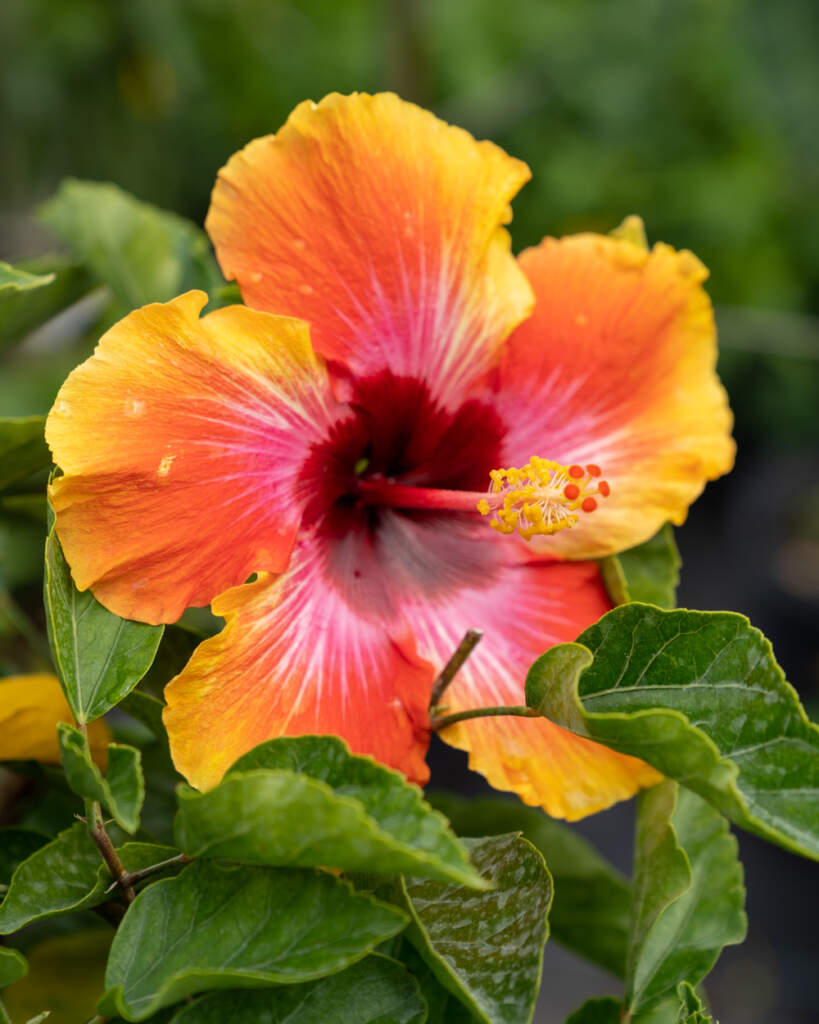
Tropical Hibiscus ‘Fiesta’
Hibiscus (Hibiscus rosa-sinensis)
Hibiscus plants are renowned for their large, showy flowers that come in a variety of colors, including red, pink, orange, yellow, and white. These tropical beauties can create an eye-catching focal point on any patio or small garden. Hibiscus plants thrive in full sun, where they can receive at least six hours of direct sunlight each day. They require regular watering to keep the soil evenly moist, especially during the growing season. A well-draining potting mix is essential to prevent root rot. During the active growing period, fertilize every two weeks with a high-potassium fertilizer to encourage abundant blooms. Prune the plant in early spring to remove any dead or weak growth and to maintain a desired shape.
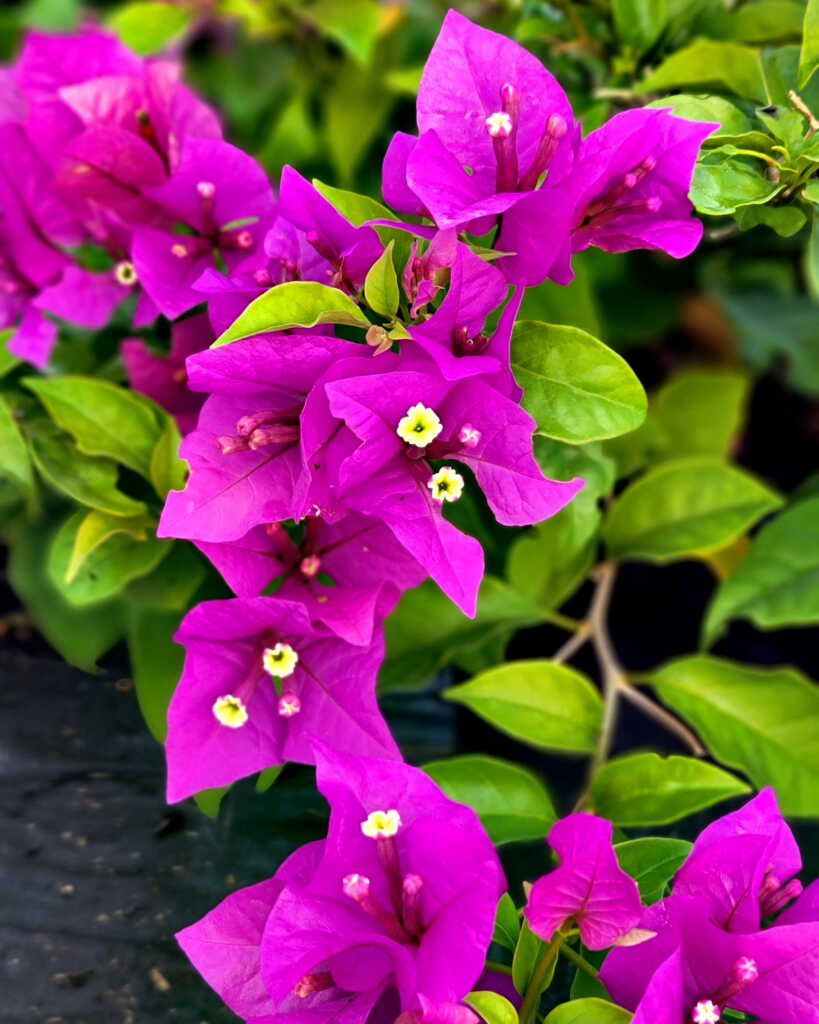
Bougainvillea ‘New River’
Bougainvillea (Bougainvillea spp.)
Bougainvillea is a striking choice for patios and small gardens, known for its vibrant, papery bracts that come in shades of pink, purple, red, orange, and white. These plants are perfect for training on trellises or allowing to cascade over the edges of containers. Bougainvillea thrives in full sun and needs at least five hours of direct sunlight daily. It is drought-tolerant once established, so water sparingly, allowing the soil to dry out between waterings. Use a well-draining potting mix to ensure proper root health. Fertilize monthly during the growing season with a balanced fertilizer to promote healthy growth and flowering. Prune after the flowering period to shape the plant and remove any dead or weak branches.
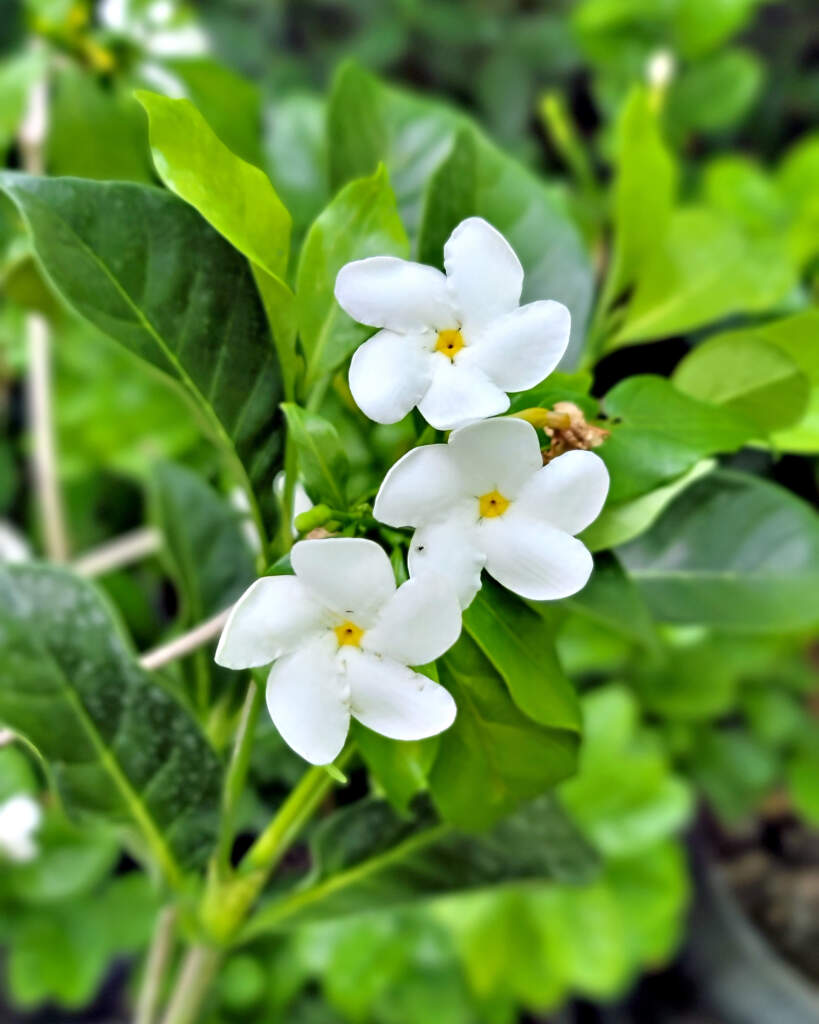
Crape Jasmine
Jasmine (Jasminum spp.)
Jasmine is cherished for its sweetly fragrant, star-shaped flowers that can fill a patio or small garden with a delightful scent. Common varieties suitable for containers include Arabian jasmine and winter jasmine. Jasmine prefers full to partial sun, with at least four to six hours of sunlight each day. Keep the soil consistently moist but not waterlogged, as jasmine plants do not tolerate drought well. A rich, well-draining potting mix is ideal for container growth. Feed the plant every two weeks with a balanced liquid fertilizer during the growing season. Prune after flowering to maintain shape and encourage new growth.
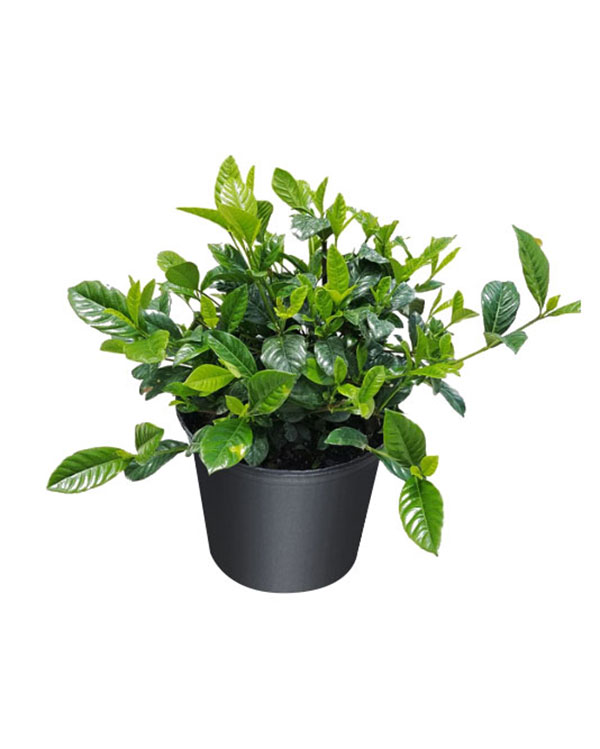
Miami Supreme Gardenia
Gardenia (Gardenia jasminoides)
Gardenias are popular for their glossy, dark green leaves and fragrant white flowers that add an elegant touch to any patio or small garden. These evergreen shrubs can be grown in containers and thrive in bright, indirect light or morning sun with afternoon shade. Gardenias require consistently moist, well-draining soil with a slightly acidic pH. Water regularly to maintain soil moisture but avoid waterlogging. Fertilize every four to six weeks during the growing season with an acid-loving plant fertilizer. Prune after the blooming period to shape the plant and remove spent flowers. Protect gardenias from cold drafts and sudden temperature changes to keep them healthy.
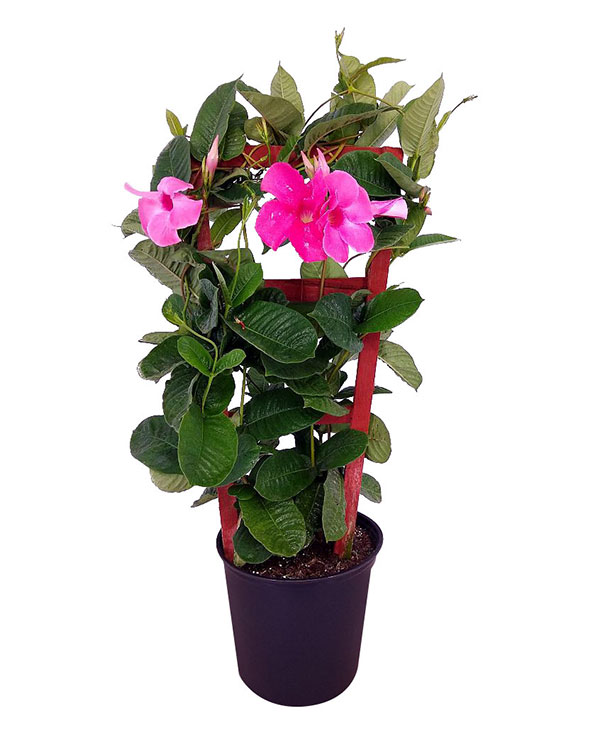
Pink Mandevilla
Mandevilla (Mandevilla spp.)
Mandevilla, also known as rocktrumpet, is a climbing vine that produces large, trumpet-shaped flowers in colors like pink, red, and white. These plants are ideal for adding vertical interest to patios and small gardens, often grown on trellises or in hanging baskets. Mandevilla thrives in full sun to partial shade, requiring at least four to six hours of sunlight daily. Keep the soil consistently moist, especially during the flowering period, but ensure proper drainage to prevent root rot. Use a well-draining potting mix enriched with organic matter. Fertilize every two weeks with a high-phosphorus fertilizer to support abundant flowering. Prune the vine in early spring to remove any dead or weak growth and to encourage bushier growth.
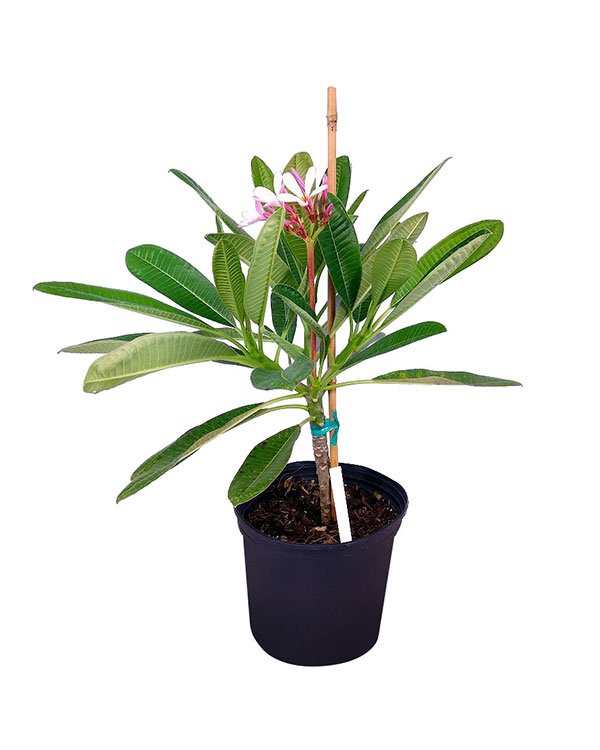
Plumeria obtusa ‘Dwarf Singapore Pink’, Frangipani ‘Dwarf Singapore Pink’
Plumeria (Plumeria spp.)
Plumeria, commonly known as frangipani, is famous for its fragrant, tropical flowers that come in a range of colors, including white, yellow, pink, and red. These plants are well-suited for container gardening and can thrive on patios and small gardens. Plumeria prefers full sun, requiring at least six hours of direct sunlight each day. Water deeply but infrequently, allowing the soil to dry out between waterings to prevent root rot. A well-draining potting mix is essential, and adding perlite or sand can improve drainage. Fertilize every two to three weeks during the growing season with a high-phosphorus fertilizer to promote blooming. Prune in late winter or early spring to shape the plant and remove any dead or damaged branches.
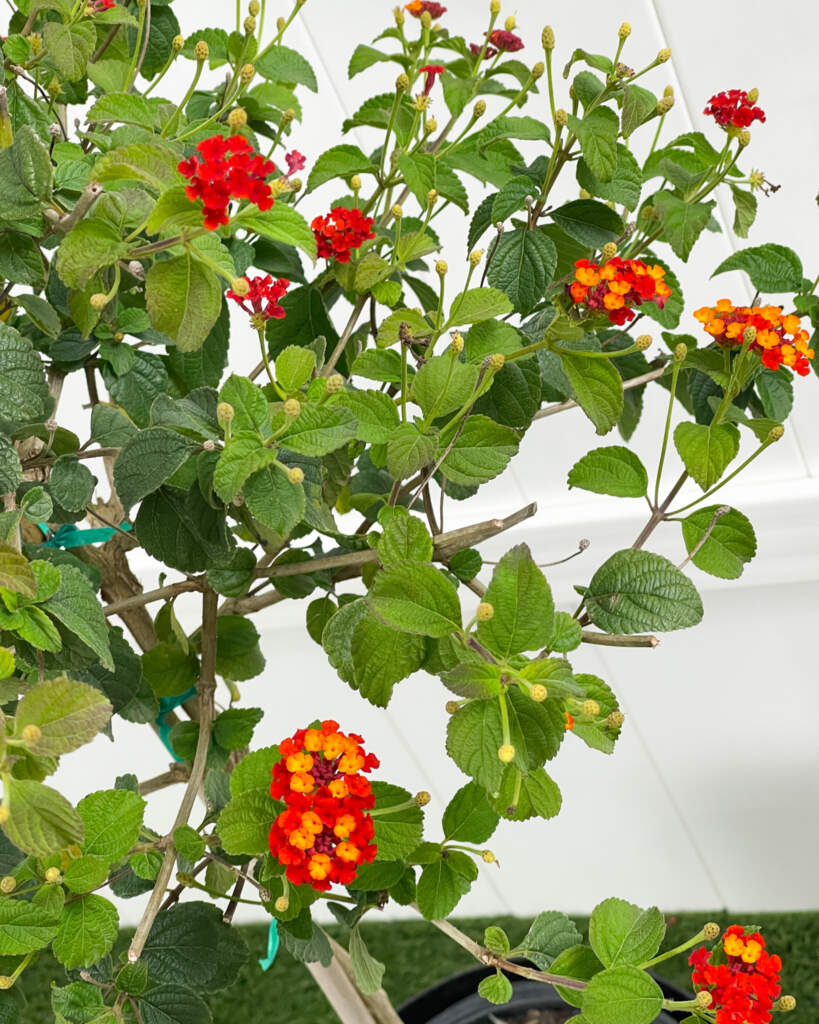
Multi-color Lantana camara
Lantana (Lantana camara)
Lantana is a hardy, drought-tolerant plant known for its clusters of brightly colored flowers that can attract butterflies and hummingbirds to your garden. It is an excellent choice for container gardening, offering a long blooming season. Lantana thrives in full sun, needing at least six hours of direct sunlight daily. Water regularly during the growing season but allow the soil to dry out between waterings to prevent root rot. A well-draining potting mix is crucial for healthy growth. Fertilize every month with a balanced fertilizer to encourage continuous blooming. Prune lantana in early spring to remove any dead or weak growth and to maintain a compact shape.
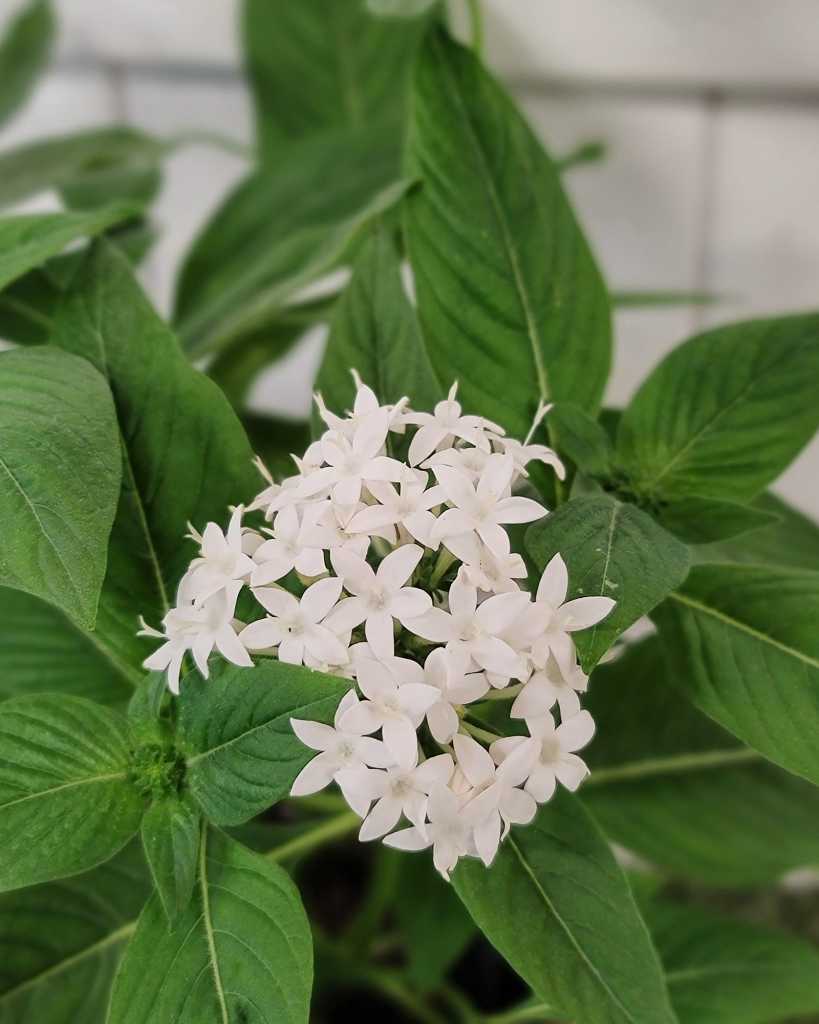
White Pentas lanceolata, White Egyptian Star Cluster
Pentas (Pentas lanceolata)
Pentas, also known as Egyptian star cluster, are excellent for adding vibrant color to patios and small gardens with their clusters of star-shaped flowers in shades of red, pink, white, and lavender. These plants are heat-tolerant and attract pollinators such as butterflies and hummingbirds. Pentas thrive in full sun to partial shade, requiring at least four to six hours of sunlight daily. Keep the soil consistently moist but well-drained, as they do not tolerate soggy conditions. Use a rich, well-draining potting mix. Fertilize every two weeks during the growing season with a balanced liquid fertilizer to support healthy growth and flowering. Deadhead spent flowers to encourage more blooms and pinch back the stems to maintain a bushy shape.
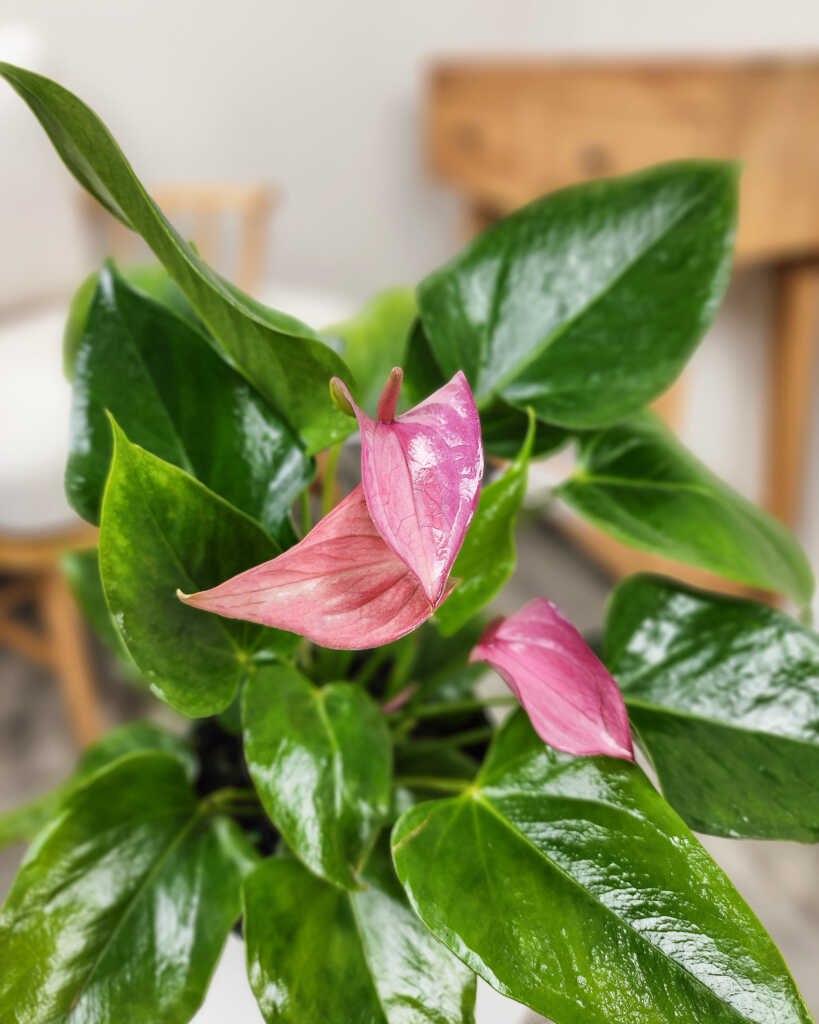
Pink Anthurium
Anthurium (Anthurium andraeanum)
Anthuriums, also known as flamingo flowers, are prized for their glossy, heart-shaped leaves and long-lasting, brightly colored spathes. These tropical plants can thrive in shaded patios and small gardens, adding a touch of exotic elegance. Anthuriums prefer bright, indirect light or dappled shade and should be protected from direct sunlight to prevent leaf burn. Keep the soil consistently moist but not waterlogged, using a well-draining potting mix with added orchid bark or perlite for improved aeration. Fertilize every six to eight weeks with a balanced, slow-release fertilizer or a liquid fertilizer diluted to half strength. Prune dead or yellowing leaves to maintain plant health and appearance.
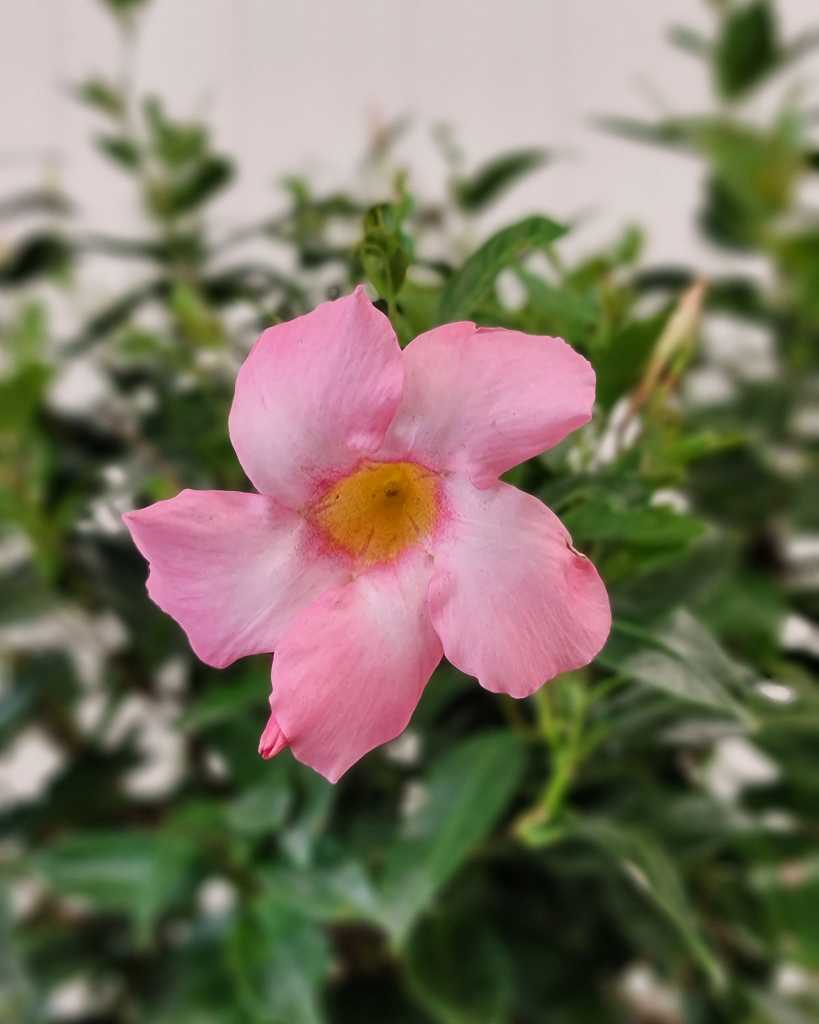
Pink Dipladenia
Dipladenia (Mandevilla sanderi)
Dipladenia, a close relative of mandevilla, is a bushier plant that produces trumpet-shaped flowers in shades of red, pink, and white. It is ideal for container gardening on patios and small gardens, offering a more compact growth habit compared to its climbing cousin. Dipladenia thrives in full sun to partial shade, requiring at least four to six hours of sunlight daily. Keep the soil consistently moist but well-drained, and use a rich, well-draining potting mix. Fertilize every two weeks during the growing season with a balanced, water-soluble fertilizer. Prune lightly to maintain shape and remove spent flowers to encourage continuous blooming.
Transforming your patio or small garden into a vibrant, colorful space is easy with these popular flowering plants available from PlantVine.com. Each of these plants offers unique beauty and charm, making them perfect choices for container gardening and small outdoor areas. By following the care tips provided, you can ensure that your flowering plants thrive and provide endless enjoyment throughout the growing season. Whether you prefer the tropical allure of hibiscus, the fragrant elegance of gardenias, or the vibrant colors of lantana, there is a flowering plant to suit every taste and style. Happy gardening!


